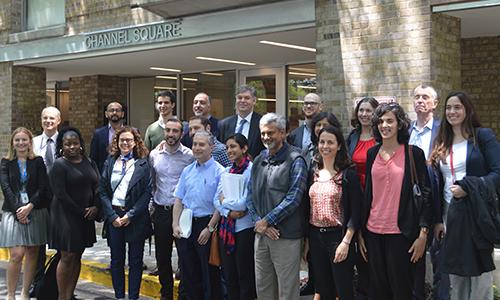On Monday, May 14, a group of 20 energy and natural resource specialists from the World Bank Group’s Energy Sector Management Assistance Program (ESMAP) visited the DCSEU’s offices to learn about VEIC’s and the DCSEU’s unique approach to tackle some of the District of Columbia’s most complex problems: Balancing surging energy demand due to population growth with ambitious climate goals. Working at the frontier of innovation and new business models to accelerate access to sustainable energy, the study tour participants were eager to gain insights into modern demand-side management and the latest demand response programs.
“It is an honor for us to be able to share our insights and lessons learned from serving the District of Columbia for the past six years”, said Ted Trabue, Managing Director of the DCSEU.
The DCSEU’s model is an excellent case study as it shows how combining energy efficiency and renewable energy targets with social equity goals can be a tool to bring economic prosperity to local communities. It addresses inequality, but also contributes to reducing the city’s environmental footprint – while DC is growing at almost a thousand residents every month. The model becomes particularly relevant as the United Nations expects the world’s urban population to increase to 68% of total population, up from 55% today. And most of this growth in urbanization will be concentrated in emerging markets in need of sustainable solutions to satisfy growing energy demand and mitigate air pollution.

In the afternoon, the group visited Channel Square Apartments which was developed by the National Housing Trust and Somerset Development Company and is one of the DCSEU’s signature projects in the affordable housing sector. The community possesses one of the largest solar installations in the District spread across the roof and carparks, satisfying about 15%-20% of energy needs and 25% of hot water consumption. Energy demand reductions through efficient lighting and in-unit appliances, as well as water saving measures, contribute to an additional reduction of energy cost and environmental footprint. At the property the conversation focused on the interaction with residents, and the non-energy benefits of updated appliances, such as improved comfort and air quality.
“We hope that some of the discussions will serve as inspiration for innovative solutions for the problems that lie ahead”, said Ted Trabue.